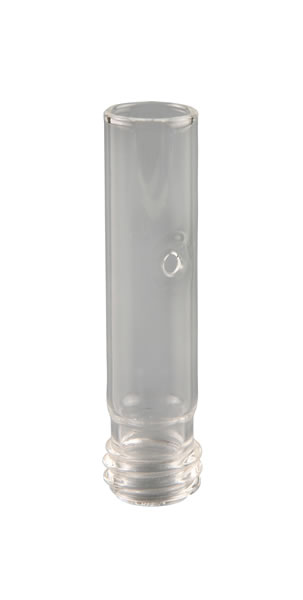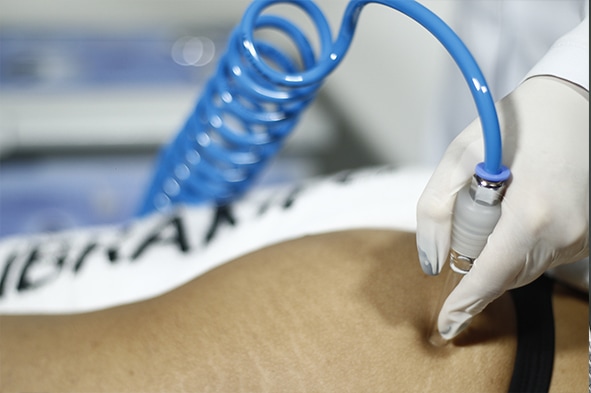
Dermotonus Slim
- Mechanical massage
- Diamond peeling (optional)
- 550 mmHg
The equipment
Dermotonus SLIM is an equipment that enables medical, aesthetic and cosmetic treatments with no systemic side effects and doesn´t cause dependence. Dermotonus SLIM is a multifunctional device used in the techniques of mechanical massage and vacuum therapy and an optional mode of microdermabrasion: diamond peeling.
The equipment is for use only under the prescription and supervision of a licensed professional.

Technical characteristics
Eletric description
- Input: 100 – 240 V ~ 50/60 Hz;
- Input power 500 VA;
- Electric class: CLASS I.
Vaccum specifications
-
Mode: Continuous or pulse
Treatment Duration: 1 to 60 minutes.
OFF Pulse Duration: 1 second.
Pulse Repetition: 10 to 50 pulses/minute.
Pulse Repetition Frequency: 10 to 50 pulses/minute.
Vacuum Pressure: 0 to -550 mmHg (negative pressure).
Applicator
Mechanical Massage - Suckers

Glass sucker bird

Glass suction cup applicator facial straight birdie

Facial cupping glass applicator (12mm)

Applicator facial glass sucker duck’s bill

Facial cupping glass applicator (18mm)

Medium roller applicator (60 mm diameter)

Small roller applicator (50 mm diameter)

Cupping applicator (60 mm diameter) for clear maneuvers (pulsed mode)

Cupping adapter with spheres (continuous mode)
Mechanical Massage - Suckers

Sandpaper for microdermabrasion: small diamond tip of 150 microns, small diamond tip of 100 microns, large diamond tip of 75 microns respectively
Mechanisms of action and Physiological effects
Mechanical Massage
Several terms are used to describe the technique, such as, endermology, vacuum therapy, endermotherapy, dermotonia and mechanical massage. This terminology is exclusive to this field.
Mechanical massage is a technique created from experiments using simultaneously the pressure therapy by negative pressure associated to rollers which use positive pressure destined to massotherapy by “palper roller” (palpate and roll). It promotes circulatory increments: venous as well as lymphatic and conjunctive mobilization tissue by making a deep massage on the skin, superficial fascia and subcutaneous tissue.
Many maneuvers and techniques are possible with this equipment, such as, mechanical massage with rollers, mechanical drainage with roller, mechanical massage with spheres, intermittent massage (clear maneuvers), conjunctive tissue mobilization, reflex massage, esthetic massage among others.
Dermotonus Esthetic negative pressure (vacuum) is adjustable and indicated by a 0 to -550 mmHg vacuum gauge being able to choose of continuous or pulsed operating mode (pulse repetition from 10 to 50 pulses per minute, with duration off for 1 second pulse). The applied suction pressure varies according to the patient’s tolerance and therapeutic goal
The main physiological effects are
- Increase of local blood circulation
- Increase of the oxygen supply
- Lymphatic and tissue drainage
- Manipulating to improve tissue softness
- Tissue toning and decongestion
- Muscle relaxation
Diamond Peeling
The diamond peeling carries out an exfoliation, screwing the skin resulting in a clearer, fresher and younger skin. The diamond peeling is performed with a probe pen which has a sandpaper attached. The probe is connected to a vacuum device that sucks the skin and presses it against the diamond sandpaper, resulting in an exfoliation more uniform and effective.
Indications
Therapeutic massager
A therapeutic massager is an electrical equipment developed for medical purposes, such as to relieve minor muscular aches and pains
Surgical instrument motors and accessories/attachments
Surgical instrument motors and accessories are AC-powered, battery, or air devices intended for use during surgical procedures to provide power to operate various accessories or attachments to cut hard tissue or bone and soft tissue. Accessories or attachments may include a bur, chisel (osteotome), dermabrasion brush, dermatome, drill bit, hammerhead, pin driver, and saw blade.

Contraindications
It is not recommended to perform the mechanical massage
- Over skin tumor regions
- Inflammatory rheumatism with fever
- Dermatosis
- Excessive capillary fragility
- Avoid the use in cardiac patients or patients with pacemaker
- Avoid the application during pregnancy, especially in the lumbar and abdominal regions
It is not recommended to perform microdermabrasion
- Acne lesions and pustules.
- Cold sores: vesicular-bullous lesions caused by virus diseases (Herpes virus hominis HVH).
- Rosacea: chronic inflammatory vascular disease characterized by erythema, telangiectasia (fine reddish blood vessels), edema and papules that may be accompanied by pustules and nodules.
- Capillary fragility: blood vessels called capillaries that break easily, causing red spots on the skin.
- Psoriasis: skin disease autoimmune considered chronic, hyperproliferative of skin of unknown etiology. It has great variety in severity and distribution of skin lesions.
- Diabetes Mellitus: systemic metabolic disease which can cause microvascular complications affecting regeneration and tissue renewal.
- Eczema: skin disease that looks red, dry, flaking and itching, also known as atopic dermatitis.
- Lupus erythematosus: a chronic multisystemic inflammatory disease of unknown cause and of autoimmune nature that affects the microcirculation and makes regeneration and tissue renewal difficult.
- Recent use of isotretinoin (up to 6 months after treatment): a medication used to treat severe acne. Its use makes the skin sensitive, which can induce the formation of cracks and injuries during microdermabrasion.
- Immediately after sun exposure.
Application techniques
Mechanical massage
- Examine the skin and clean the treated area.
- Clean the application accessories before and after each therapy session.
- After the procedure it is common that the patient presents hyperemia (in some cases, slight swelling) and hypersensitivity.
Microdermabrasion
- Examine the skin and clean the treated area.
- Clean the application accessories before and after each therapy session.
- After the procedure it is common that the patient presents hyperemia (in some cases, slight swelling) and hypersensitivity reactions.
- Eventually, crusts may be formed, which should not be removed to avoid scarring or stains.
- Avoid the use of creams and lotions which contains acids up until one month before the treatment.
- Avoid direct exposure to the sun after treatment.
- Use sunscreen and hydrating creams.
Accessories
























